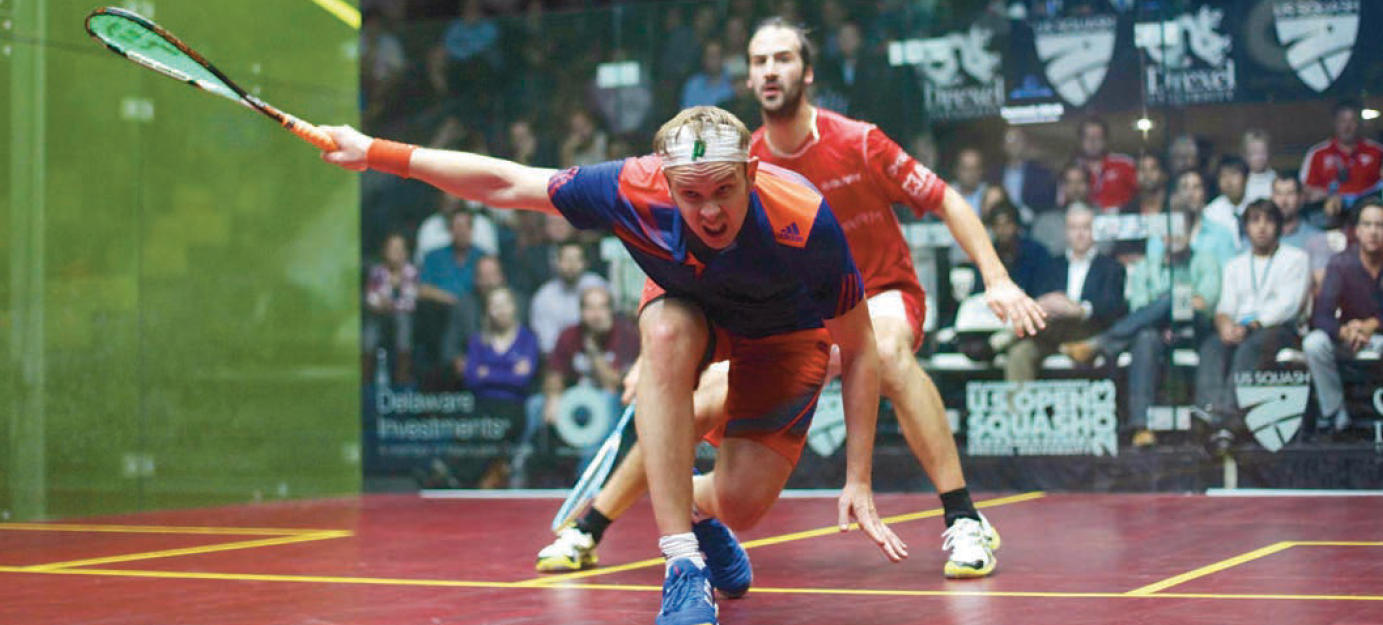
By Scott Devoy
![]() At the 3.0 skill level, players tend to spend a lot of time so focused on the ball that they chase it all over the court. This leads to over-running the ball, getting too close and situations where players, run, stop and then try to hit a shot. There is some inefficiency in the movement—time is spent watching where the ball has gone, then reacting after the other player has played a shot. To progress through this level, spend time on basic drills and ghosting to work on movement patterns, rhythm/timing and reading what the ball is doing.
At the 3.0 skill level, players tend to spend a lot of time so focused on the ball that they chase it all over the court. This leads to over-running the ball, getting too close and situations where players, run, stop and then try to hit a shot. There is some inefficiency in the movement—time is spent watching where the ball has gone, then reacting after the other player has played a shot. To progress through this level, spend time on basic drills and ghosting to work on movement patterns, rhythm/timing and reading what the ball is doing.
![]() As players gain more experience from time on court and reach the next level, movement begins to change again. Players need to focus on setting the T and working on reading the ball. As you set the T and can read where the ball is going, timing becomes better and the use of the lunge becomes more prevalent. To help with controlling the ball, the use of the split step* from the T is important with generating momentum and helping stay balanced through the strike of the ball. The use of the lunge helps players stay connected to the center of the court making the recovery to the T shorter.
As players gain more experience from time on court and reach the next level, movement begins to change again. Players need to focus on setting the T and working on reading the ball. As you set the T and can read where the ball is going, timing becomes better and the use of the lunge becomes more prevalent. To help with controlling the ball, the use of the split step* from the T is important with generating momentum and helping stay balanced through the strike of the ball. The use of the lunge helps players stay connected to the center of the court making the recovery to the T shorter.
![]() At the 5.0 level you have started to master the lunge and recovery. The split step will help with setting the T further up the court, allowing you to take the ball out of the air and apply pressure by taking time away from your opponent. ‘Holding’ the T longer and becoming more explosive from the middle means you have to become comfortable playing off both legs. Using the ‘traditional’ foot at this level takes time that often won’t be available higher up the court.
At the 5.0 level you have started to master the lunge and recovery. The split step will help with setting the T further up the court, allowing you to take the ball out of the air and apply pressure by taking time away from your opponent. ‘Holding’ the T longer and becoming more explosive from the middle means you have to become comfortable playing off both legs. Using the ‘traditional’ foot at this level takes time that often won’t be available higher up the court.
Five Keys For better movement:
• Being able to read where the ball will end up. Not overcommitting to chasing it around the court.
• The use of the ‘*split step’ to generate momentum, timing and balance.
• Using the lunge to remain balanced through your shot.
• Trailing leg remains connected to the center line of the court.
• Being able to play off both legs on either side of the court.
Remember, if you can control your body, you will control the racquet which means you will control the ball!
*The “split step” is a small hop, about one inch off the ground (as your opponent hits). As you land, your weight is spread evenly with momentum loaded in your legs (see Simon Rösner in the photo). Once you see where the ball is you can transfer that momentum in the direction you need to go. The split step helps you maintain balance and poise once you arrive at the ball. If you remain flat-footed on the T, your first movement is backwards and off balance straight away; meaning you will likely be off- balance at the ball.





